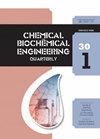用于肾脏置换的体外血液治疗设备:现有技术回顾与微尺度设备的未来发展方向
IF 1.6
4区 生物学
Q4 BIOTECHNOLOGY & APPLIED MICROBIOLOGY
引用次数: 0
摘要
体外血液治疗设备(ETD)是能够通过体外循环在体外进行治疗的医疗设备。这些设备广泛应用于临床/医院环境和家庭护理。一个典型的例子是使用血液透析器或人工肾,通过血液透析和持续肾脏替代疗法治疗肾脏疾病。ETD 的各种应用都有共同的局限性,如凝血、溶血、空气栓塞和敏感反应,所有这些都是人体生理与治疗机制相互作用的结果。研究人员正在采用基于微尺度的技术来实现下一代 ETD,以解决长期存在的问题并提高治疗效果。这篇综述文章的重点是传统 ETD 结构的演变和向设备微型化的发展。我们首先对 ETD 进行了狭义但通用的定义,并介绍了其目前的形式和在肾脏替代中的用途,然后回顾了基于微尺度的 ETD 开发的重要性和进展,以及实现基于微尺度的全功能 ETD 的未来方向,这反映了当代技术和工程的进步。本文章由计算机程序翻译,如有差异,请以英文原文为准。
Extracorporeal Blood Therapeutic Devices for Renal Replacement: A Review of Current Technologies and Future Directions Toward Microscale-based Devices
Extracorporeal blood therapeutic devices (ETDs) are medical devices capable of performing treatments outside of the body through an extracorporeal circuit. These devices are widely used in both clinical/hospital settings and at-home care. A prototypical example is the treatment of nephrological diseases through hemodialysis and continuous renal replacement therapy using a hemodialyzer or an artificial kidney. The various applications of ETDs share common limitations such as coagulation, hemolysis, air embolism, and sensitivity reactions, all of which arise from the interactions of human physiology with the treatment mechanisms. Researchers are implementing microscale-based technology to achieve the next-generation ETD that can address persistent problems and improve therapeutic performance. This review article focuses on the evolution of the structure and development of conventional ETDs towards the miniaturization of the device. We begin with a narrow but common definition of ETDs as well as their current form and uses for renal replacement followed by a review of the importance and progression of microscale-based ETD development together with future directions towards achieving fully functional micro-scale-based ETDs that reflects contemporary technological and engineering advancements.
求助全文
通过发布文献求助,成功后即可免费获取论文全文。
去求助
来源期刊
CiteScore
2.70
自引率
6.70%
发文量
23
审稿时长
>12 weeks
期刊介绍:
The journal provides an international forum for presentation of original papers, reviews and discussions on the latest developments in chemical and biochemical engineering. The scope of the journal is wide and no limitation except relevance to chemical and biochemical engineering is required.
The criteria for the acceptance of papers are originality, quality of work and clarity of style. All papers are subject to reviewing by at least two international experts (blind peer review).
The language of the journal is English. Final versions of the manuscripts are subject to metric (SI units and IUPAC recommendations) and English language reviewing.
Editor and Editorial board make the final decision about acceptance of a manuscript.
Page charges are excluded.

 求助内容:
求助内容: 应助结果提醒方式:
应助结果提醒方式:


